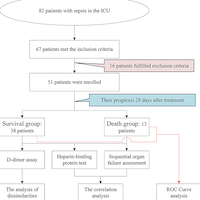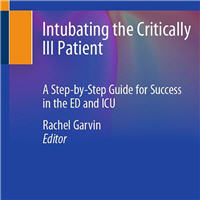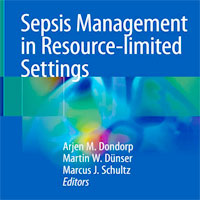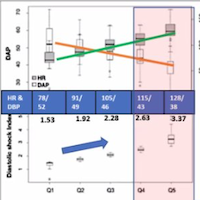Tag: sepsis

Ground-breaking New AI Technology for Severe Sepsis Rapid Identification
ASEP Medical Holdings Inc. announced the ground-breaking use of artificial intelligence (AI) to rapidly identify infections at increased risk of severe sepsis. The method was developed by the Hancock Lab, under the guidance... read more

Biomarkers in Trauma, Injury and Critical Care (Biomarkers in Disease: Methods, Discoveries and Applications)
This handbook systematically presents biomarkers for traumatic injuries. The book covers topics such as traumatic brain injury, liver injury, burn severity, muscle heart damage, and acute inflammation in polytrauma and their... read more

Fluid Therapy for Critically Ill Adults with Sepsis
Fluids are an important component of treating patients who are critically ill with sepsis. Although optimal fluid management in patients with sepsis remains uncertain, clinicians should consider the risks and benefits of... read more

Heparin-Binding Protein Predictive Value and D-Dimer in Sepsis Patients
As common clinical indicators for predicting sepsis, both HBP and D-dimer have high diagnostic effectiveness. Furthermore, the combined application of these two biomarkers can achieve favorable effects. In clinical practice,... read more

Rapid Sepsis Tests Using Magnetic Nanoparticles
Qun Ren, an Empa researcher, and her team are currently developing a diagnostic procedure that can rapidly detect life-threatening blood poisoning caused by staphylococcus bacteria. Staphylococcal sepsis is fatal in up... read more

Handbook of Sepsis
This recently released practically oriented book provides an up-to-date overview of all significant aspects of the pathogenesis of sepsis and its management, including within the ICU. Readers will find information on... read more

Intubating the Critically Ill Patient: A Step-by-Step Guide for Success in the ED and ICU
Intubating critically ill patients is a process that requires a well-thought-out, step-by-step plan, specific to each patient. This book teaches the steps necessary to predict, prepare, perform, and provide pre and post-intubation... read more

Validation of qSOFA as a Screening Tool for Early Identification of Sepsis Patients
Sepsis and septic shock are major healthcare problems, affecting millions of people around the world each year. The speed and appropriateness of therapy administered in the initial hours of treatment are likely to influence... read more

Sepsis Management in Resource-limited Settings
This book is open access under a CC BY 4.0 license. It constitutes a unique source of knowledge and guidance for all healthcare workers who care for patients with sepsis and septic shock in resource-limited settings. More... read more

Biggest AMR dilemma: to give, or not to give antibiotics?
Sepsis (a dysregulated reaction of the body to infection with 50 million cases per year) must be treated with antibiotics as soon as it is suspected — ideally, within the first hour. Antibiotics are thus easily administered... read more

Predicting Deterioration of Sepsis Patients Using Continuous HVR Analysis
We showed that continuous electrocardiograms (ECG) recordings can be automatically analyzed and used to extract heart rate variability (HRV) features associated with clinical deterioration in sepsis. The predictive accuracy... read more

Diastolic Shock Index and Septic Shock Outcome
Early recognition and resuscitation of patients in septic shock are critical skills for an emergency medicine physician. Many clinical decision-making tools have been developed and validated in their use to identify and... read more

AHRQ Errors Report was “Outright Unconscionable”
Headlines this winter screamed the bad news: Emergency physicians are literally killing people! "As many as 250,000 people die every year because they are misdiagnosed in the emergency room, with doctors failing to identify... read more

Optimal Bundle of Recommendations for Sepsis
The aim of this retrospective cohort study was to identify among the Surviving Sepsis Campaign (SSC) guidelines the optimal bundle of recommendations that minimize 28-day mortality. The bundle of six recommendations is... read more




